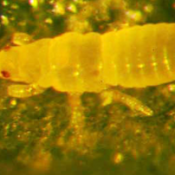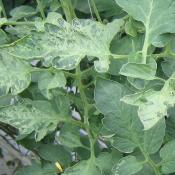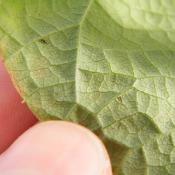Brown Marmorated Stink Bug
4 February 2019
Update on Brown Marmorated Stink Bug (BMSB) activities
Over the past few months there has been a lot of activity around BMSB. This is an update on the risk, recent detections and the tools we have available in a response.
The risk
 BMSB is a significant risk to our industry. It feeds on 300 different plants, is hard to kill and spreads quickly. Over winter it enters houses and is difficult to remove, releasing a foul smell when disturbed. BMSB can come into New Zealand on many pathways from a cargo ship to a tourists suitcase, and the biggest risk is from 1 Sept to 30 April.
BMSB is a significant risk to our industry. It feeds on 300 different plants, is hard to kill and spreads quickly. Over winter it enters houses and is difficult to remove, releasing a foul smell when disturbed. BMSB can come into New Zealand on many pathways from a cargo ship to a tourists suitcase, and the biggest risk is from 1 Sept to 30 April.
We have heard plenty of reports of people seeing it in hotel rooms in USA/Asia/EU so it’s hardly surprising it’s being found at the border regularly. So far this season MPI have found 165 live stink bugs either at the border or reported by the public (including 26 found in one mail parcel by a member of the public in Dec and 48 on a single cargo vessel). We have also had two instances where a stink bug has been found post border with no known pathway (no recent travel or imports). In these cases, MPI increased surveillance in the area, including using sniffer dogs, inspection, pamphlets drops and traps. No further BMSB have been found and there’s no evidence of an established population.
Tools for use in a response
BMSB is very difficult to manage and eradicate so we’re already considering which tools to use in a response. Unfortunately there’s no silver bullet and a response would be complex and need the support of the whole country.
TomatoesNZ is a member of the Government Industry Agreement (GIA) which gives our industry a direct say in managing biosecurity risks, sharing decision making and costs. Under GIA we are part of the BMSB Council to coordinate readiness and response activities alongside other horticulture industries.
Under this Council we are coordinating NZ research activities and reviewing studies overseas to increase our options in the event of an incursion. A few of these management tools include;
Samurai wasp
In August 2018 the samurai wasp was pre-approved by the NZ Environmental Protection Authority (EPA) to be released into New Zealand in the event of a BMSB incursion. However there are rules (including where and when it can be released). The GIA council is currently looking at the best options for quick access to the wasp, including approvals to hold it in NZ in containment (the wasp can survive several months), or hold it overseas ready for importation. Each of these options will have costs associated so the risk/benefit is being considered.
Chemical control
The chemical options we have available are very limited and further complicated by the EPA review of various chemicals. Bifenthrin is currently able to be used in a response situation but spraying would be very targeted and its likely fruit would need to be dumped from sprayed trees. Under the GIA Council a project is underway to consider approvals for other chemical options, both for response and long term management. However the use of chemicals would also interrupt IFP programmes so it’s essential we have other options.
Traps
There are a range of BMSB traps available, however they vary in the distance they are able to attract BMSB from. Some will draw the bug close, but not necessarily into the trap. There are two trapping projects currently underway in NZ, one by MPI and another by Plant and Food Research. These will act as surveillance but will also help us to determine the best practice for trapping in an incursion.
Netting
The council is conducting a review on the effect of exclusion netting. Due to the cost of netting and effect on beneficial insects, we are completing a literature review to see whether its viable before starting trials.
Potential future tools
There is a lot of research happening around the world which may help us in the future. Members of the council are constantly engaging with domestic and international researchers to get more of an understanding of how BMSB acts and the best ways to deal with it. However, if you hear of any new research or management tools, please feel free to send me an email – it might be worth looking into.
Our best chance of eradicating BMSB is if we find it early. The public awareness campaigns are working, with a large number of the finds being reported by members of the public. Talk to visitors and ensure everyone knows what to look for -be vigilant, keep an eye out and report anything suspicious. Call MPIs pest and disease hotline on 0800 80 99 66 or for more information see https://www.mpi.govt.nz/protection-and-response/finding-and-reporting-pests-and-diseases/priority-pests-plant-aquatic/horticultural-pests/brown-marmorated-stink-bug/
NB: TNZ would like to acknowledge Nicola Roberston, New Zealand Apples & Pears, for providing this update.
11 April 2018
How to make a submission on the Samurai Wasp application
The Environmental protection Authority (EPA) has called for public submissions on the release of Samurai Wasp, a parasitoid wasp to combat Brown Marmorted Stink Bug.
Download a copy of TomatoesNZ's submission here.
Submissions are open until Thursday 31 May 2018.
Make a submission using this form or this template, or go to the EPA website.
The EPA will also accept emails directly (email: submissions@epa.govt.nz), and require at the minimum only a few sentences of support (if emailing include ‘Application APP203336 ’ in the subject line).
As you are preparing your submission you may wish to consider:
• Providing a description of your business/industry.
• Describing how brown marmorated stink bug has the potential to impact on your livelihood/business/industry (for example, overseas growers have experienced crop losses, aesthetic damage to fruit, management costs, a need to increase insecticide use, labour costs etc)
• Describing how brown marmorated stink bug has the potential to impact on your lifestyle/family/home/garden (for example, overseas people have experienced infested homes and buildings, an unpleasant odour from the bugs etc)
• Describing how brown marmorated stink bug has the potential to impact on your social/cultural/environmental values (for example, overseas BMSB feeds on valued amenity and native plants etc)
• Including whether you feel that the samurai wasp will be a useful BMSB control tool in comparison to the other available tools and why (overseas the primary control methods include insecticide, trapping or exclusion netting)
• Stating whether you wish for the EPA to approve or decline the application.
For more information about BMSB and what is being done to prevent it establishing in New Zealand, visit this Biosecurity New Zealand webpage
Tiny wasp to combat stink bug
11 April 2018
Horticultural industry groups along with the Ministry for Primary Industries (MPI) are working together to use a tiny parasitoid wasp to combat the Brown marmorated stink bug (BMSB).
The BMSB Council (a partnership between horticultural industry groups and MPI, under GIA) has made an application to the Environmental Protection Authority (EPA) seeking approval to release the Samurai wasp (Trissolcus japonicus) as a biocontrol agent against BMSB, but only if an incursion is found in New Zealand.
BMSB Council Chair Alan Pollard says if a BMSB incursion is found here, the consequences would be disastrous for New Zealand's horticulture industries and everyday New Zealanders.
“The stink bug is one of the biggest biosecurity threats we face, and it could cause hundreds of millions of dollars of losses. The wasp provides an opportunity to be proactive in our approach and gives us another tool we can use to control the stink bug,” said Mr Pollard.
“It feeds on over 300 plant species and can multiply and get to very high population numbers rapidly, destroying crops and gardens and even get into your home. In the USA and Europe where the invasive pest has become established, it has caused severe damage to the horticulture industries. It’s also invaded residents’ homes and become a real social nuisance.”
“We’ve also seen growers overseas use high levels of insecticides as the primary way to control the stink bug. We believe the wasp will provide a targeted and self-sustaining control tool and provides growers with another option other than increasing insecticide sprays,” says Mr Pollard.
The wasp does not sting and is harmless to humans but is a natural enemy of the stink bug. The female wasp lays her eggs inside the stink bugs eggs, killing the stink bug in the process. Studies overseas have shown the wasp can destroy over 70 percent of the eggs in a stink bug egg mass.
A NZIER report, commissioned by the Samurai Wasp Steering Group, has estimated that gross domestic product would fall by between $1.8 billion and $3.6b by 2038 if BMSB became established. It also estimated the horticulture export value could fall by between $2b and $4.2b.
Public submissions are now open until 5pm, Thursday, 24 May 2018. Interested parties are encouraged to make a submission on the EPA website.
ENDS
For more information contact:
Alan Pollard
GIA BMSB Council Chair
Ph: 021 576 109
Email: alan@applesandpears.nz
About the BMSB Council
The BMSB Council is a partnership under GIA between industry and government and is the responsible for BMSB readiness and response. The Council consists of member organisations (Kiwifruit Vine Health, Ministry for Primary Industries, New Zealand Avocado, New Zealand Apples & Pears, New Zealand Winegrowers, Tomatoes New Zealand, Vegetables New Zealand) and observers (Foundation for Arable Research, Horticulture New Zealand, New Zealand Plant Producers Inc., Process Vegetables New Zealand and Summerfruit New Zealand).
About the Government Industry Agreement (GIA)
GIA operates as a partnership between industry groups and Government to manage pests and diseases that could badly damage New Zealand's primary industries, our economy, and our environment. It aims to improve biosecurity outcomes and give everyone the confidence that the best decisions are being made to manage and mitigate biosecurity risks. For more information, visit www.gia.org.nz.
More details about the application can be viewed in this Q&A sheet.
BMSB risk season is upon us
December 2016
The BMSB risk season (summer) is well and truly underway, with MPI reporting as many detections at the border already this season as for the whole of last season.
HortNZ industry is working with MPI, NZWine, Foundation for Arable Research, and better Border Biosecurity (B3) to apply to the EPA for approval of a biocontrol agent for BMSB (Trissolcus japonicus). This work is focused on the EPA approval process so hopefully we can all start to make real progress on the GIA Operational Agreement for response to a BMSB incursion in the new year.
Read more about BMSB and its biocontrol agent in this article from the February NZ Grower magazine.
Preventing the entry of BMSB remains our key approach but, given the detections, preparing to respond to an incursion is also top of mind. In the prevention space we appreciate the excellent work done by MPI border staff to detect pests on the cargo, mail and passenger pathways. The threat from BMSB is increasing as it spreads across Europe. With an increase in entry pathways keeping alert for BMSB in NZ remains critical so please print out the BMSB posters (below) for staff, friends and family, and report immediately any suspicious bugs!





